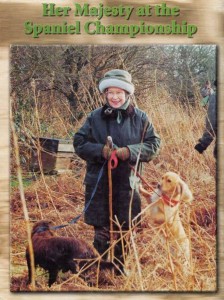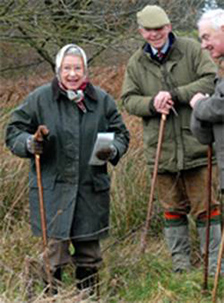Tune Up Required
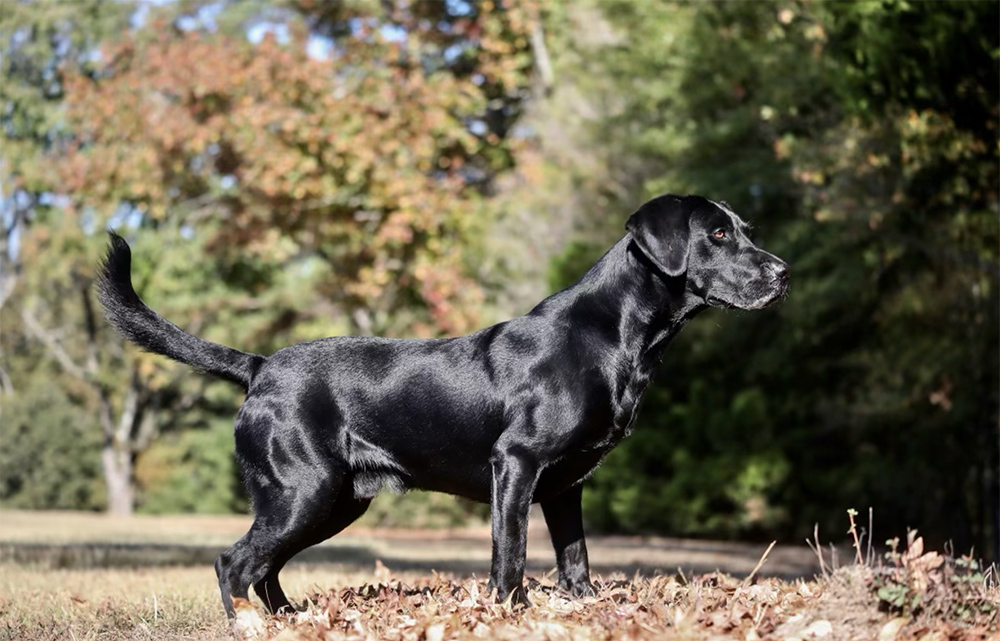
During an active wingshooting season that has provided a great deal of “bird work” for our retrieving gundogs, the excitement of the successes afield may have caused a bit of erosion to your dog’s responsiveness and behaviors which were established during training.
Here are some examples:
- Unsteadiness
- Sloppy delivery
- Disregarding handling casts
- Ignoring the whistle
Just to name a few of the “cracks” that could appear due to:
- Excitement
- Competitiveness
- Success while disregarding commands
- Anticipation
Too often the handler becomes more focused on the hunt, bird count, fellowship, and shooting while disregarding the dog’s performance. But in the field, did we incorporate a few denials? Correct sloppy bird delivery? Address immediately the ignoring of the whistle?

By comparison, an athletic coach prepares for the next game day by training and conditioning the players between events. He has the team running the basics, correcting identified problems, and reviewing skills in preparation for the next game. So should the hunter who is fielding a gundog. The hunt is gameday but between these exciting hunting opportunities, it’s back to the fundamentals.
There are many “tune-up” drills Wildrose has developed to revisit known skills the dog has mastered. Many can be viewed on our website, uklabs.com/media. Just keep in mind that skills in any discipline can deteriorate under excitement, distractions, complexity, or stress. So, it becomes important to continuously reinforce what matters during such intense exposures between activities by revisiting the fundamental elements desirable. Always, practice as we will play.
One drill to reinforce solid whistle stop and casings is the “DRIVE-BY”. During a 3-day quail and dove hunt in South Texas this new year, Pappy had many opportunities to work quail (pointing, flushing, and recovery) and enjoyed several fast-action dove hunts with loads of bird retrieves. While his field performance was very good throughout the hunts, the repeated exciting exposures of this type could ultimately wear on his responsiveness if continued. So, it was back to the basics the following week.
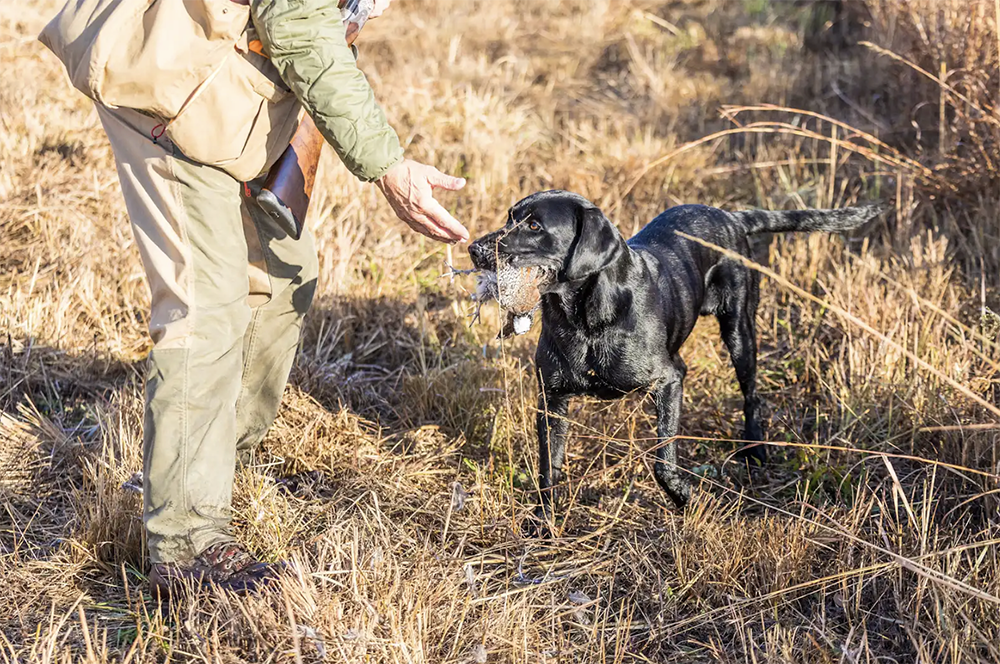 The Drive-By
The Drive-By
Select a narrow area of cover, something a dog can run through. I chose an open field on either side of a tree-lined ditch. One could choose a lane of thick grasses or even a creek, which is a natural psychological barrier the dog must run through. (see page 129, Sporting Dogs and Retriever Training, the Wildrose Way).
The Set Up:
- Place two scented bumpers as a ladder as “seen” memories on one side of the open ground. Placements are 15 to 20 yards away from the cover barrier.
- Circle around the barrier to the open ground on the opposite side from the bumpers. Here we drop a “seen” trailing memory for the dog.
- The trailing memory is placed 20 yards away from the cover adjacent to the barrier. We are creating a line that will pass the ladders, basically a one-sided baseball pattern. This memory becomes second base. The ladders on the opposing side of the barrier represent either first or third.
- Walk parallel to the cover to the perceived home plate location to establish the line to the memory. Take notice of the ½ point (pitcher’s mound) directly across from the ladders which will become the location for the dog’s stop and cast.
From this position, line for the second-base memory.
When the dog approaches midpoint, parallel to the ladders, whistle stop. Hold the dog in place for 5-10 seconds, gain focused steadiness then cast through the barrier for a pick.
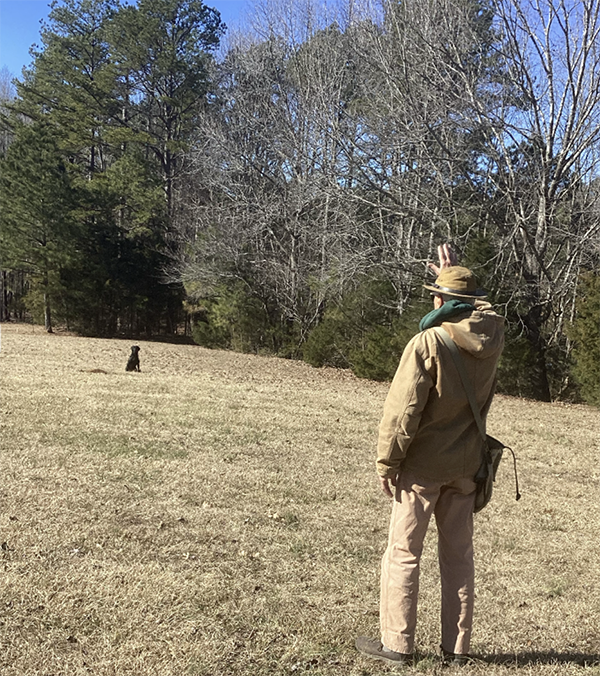 Upon delivery, line for the second-base memory. If the dog chooses to pull off the line toward the ladder, stop and recall (primary reset). Re-line for the long bumper.
Upon delivery, line for the second-base memory. If the dog chooses to pull off the line toward the ladder, stop and recall (primary reset). Re-line for the long bumper.- Drop a “seen” memory at the home plate. Walk to the second base, the original memory location. Again, line for the long memory at home plate, stop and cast for the remaining laddered bumper.
- Upon delivery, pick the home plate memory. End of game…. Move the location or select another exercise.
Problems that can arise which become coaching/solution opportunities:
- Dog won’t drive through the barrier/cover.
- Switching on the ladders.
- Dog won’t stop quickly.
- Dog pops (stops on his own) in anticipation.
- Dog won’t take a straight line on the cast.
- Suction pulls the dog off the line for the long memory opting for the shorter/closer ladders.
Each issue should be broken down into their simplest parts, perfected and reestablished for success. Nothing is learned through failure.
This simple drill can be moved about to incorporate different types of cover and terrain including water.
Remember, under excitement, a dog will not rise in their level of performance to meet our expectations. They will default to their level of training: entrenched habits. See and apply Wildrose Law #17.
Have fun with the tune ups!


